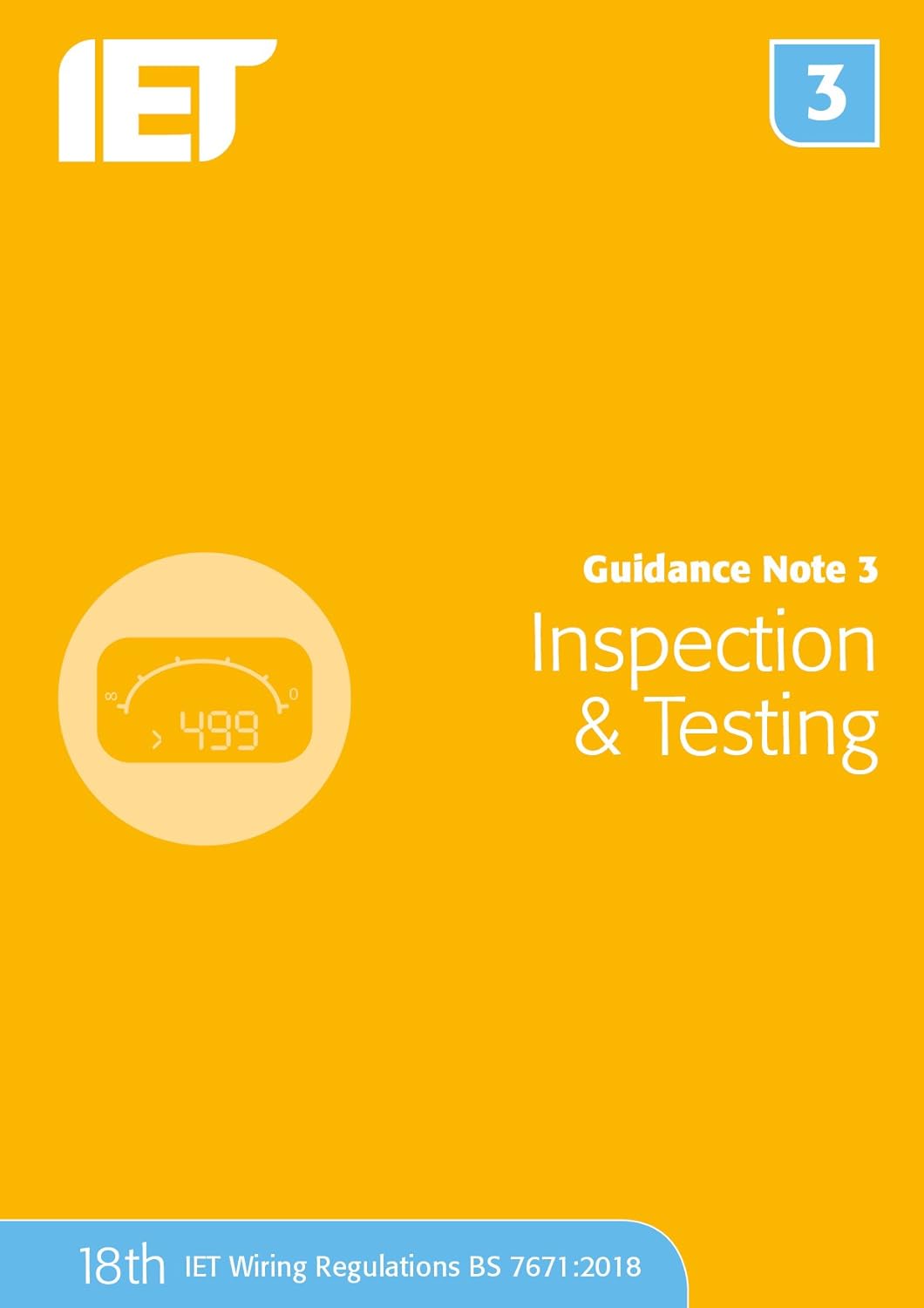About this deal
Also for the D type some times the thermal part gets there at about the same time as the magnetic, depending on the ambient temperature ,and so maybe we have to assume the breaker is cold and the cable hot. A good simulation of our example with similar values, but giving readings in kΩ instead of Ω, can be made using six 47 Ω and six 120 Ω resistors to represent the line and cpc conductors of the ring final circuit respectively. As shown in Figure 9, these can be connected as a cross-connected r 1 and r 2 as in Step 3 of the ring final circuit continuity test. Whoops, you don’t have access to that! Please register with the IET to join the community and access this area. A fundamental guidance book for all those involved with the testing and inspection of electrical installations
Regulation, 702.414.3, concerning SELV and PELV, has been introduced. Section 703 - Rooms and cabins containing sauna heaters Table 51 has been modified slightly to take into account changes of colour identification for DC and abbreviations have been added. The inspector will need to have a sound working knowledge of the current edition of BS 7671 and it is essential they possess a current edition, or have access to it, for reference purposes. Additionally, access to a current edition of IET Guidance Note 3 would be advantageous. For work on large and complex installations, access to other British Standards, IET Guidance Notes (such as Guidance Note 8: Earthing and Bonding), manufacturer’s data sheets and other information may be required. The inspection and testing of an installation must only be carried out by (electrically) skilled persons with sufficient knowledge and understanding of electrical installations. We often get enquiries advising that an EICR has been carried out and the customer has been advised that their installation needs to comply with the latest edition of BS 7671, which is not the case.PD IEC/TR 62350:2006 Guidance for the correct use of residual current-operated protective devices (RCDs) for household and similar use. The inspector is also required to recommend a date for further inspection and testing to be carried out. These dates are often assumed or taken from Table 3.2 of IET Guidance Note 3 Inspection & Testing. BPG 4 is an excellent guide to classification codes for common observations in domestic installations. In the end the design is something for which the designer is responsible for, and part of that is to decide if you cone in or cone out when you look at the test instrument accuracy, you may prefer to set your own tighter limits, or you may know more about the installation and set wider. Before we look at testing RCDs, it is worth pointing out that the requirements for selection and erection of RCDs have been amended. Regulation 531.3.3 of BS 7671:2018+A2:2022 states that the appropriate RCD shall be selected according to the presence of DC components and AC frequencies. Further, Type AC RCDs shall only be used to serve fixed equipment, where it is known that the load current contains no DC components.
Changes include the addition of new regulations (relocated from Chapter 53) covering the impact and the installation of heating cables. Chapter 82 - Prosumer’s low-voltage electrical installations Existing installations may have been designed and installed to conform to the standards s et by earlier editions of BS 7671 or the IEE Wiring Regulations. This does not mean that they will fail to achieve conformity with the relevant parts of the Electricity at Work Regulations 1989.’ Generally, an RCD either works or it doesn’t and, in essence, the test is to prove that the RCD is functional and is not intended to confirm that it still performs as per the relevant product standards and manufacturers requirements. RCD testing required by product standards is carried out by the manufacturer and is called type testing. The equipment at the intake position is owned by the distributor and the meter and tails belong to the supplier. However, as part of the inspection process, BS 7671:2018 requires the inspector to carry out a visual inspection of the external condition of the distributor’s equipment, to ensure it is safe for continued use.Section 411 contains a number of significant changes. Some of the main changes are mentioned below. However, it is important to remember that Table 3.2 is titled ‘recommended initial frequencies of inspection of electrical installations.’ The first important word is ‘recommended’, it is exactly that, a recommendation and not a legal requirement. It is also important to note that this is for initial frequencies for new installations. It is worth noting that for domestic rented accommodation and houses in multiple occupation, the recommended maximum period between each inspection and test is five years or change of occupancy, which is often overlooked. Predicted measured resistance = r y//r g = 0.6511×0.3515 ÷ (0.6511+0.3515) = 0.2283 Ω Results and conclusion They are different terms, but they all mean the same thing, the person carrying out the inspection and testing is required to have the correct qualifications, experience and knowledge. The requirements for RCD testing in BS 7671:2018+A2:2022 are given in the notes to Regulation 643.7.1 for fault protection and Regulation 643.8 for additional protection. A note in each section states the requirements and the key points are highlighted below.
Related:
 Great Deal
Great Deal 